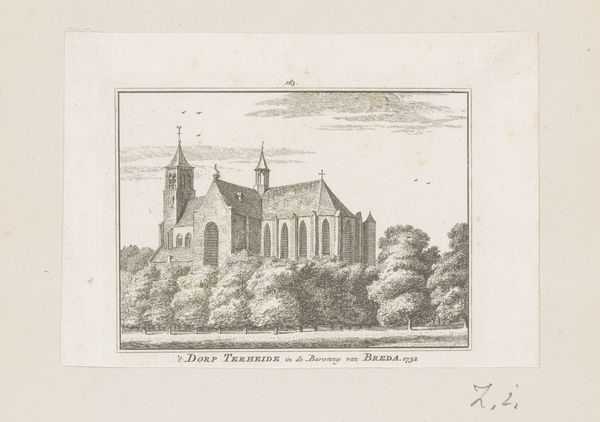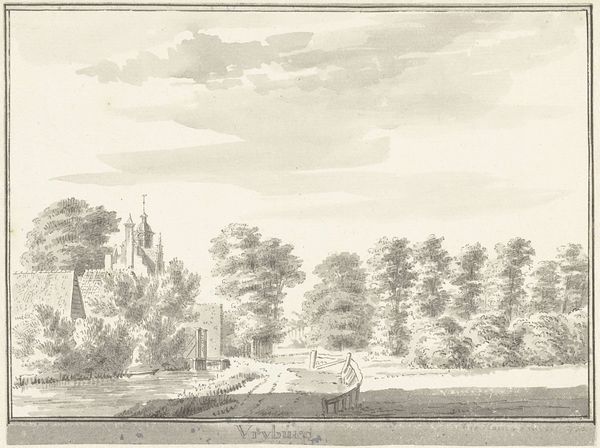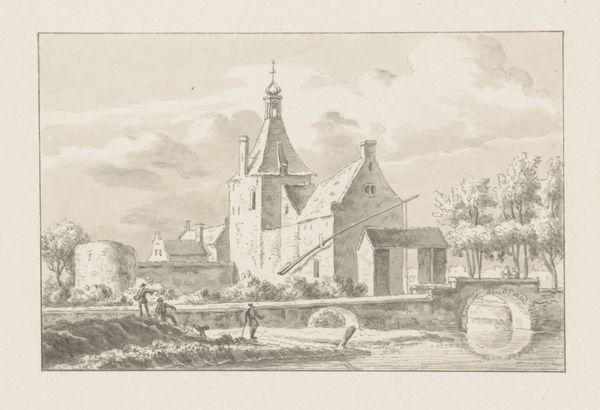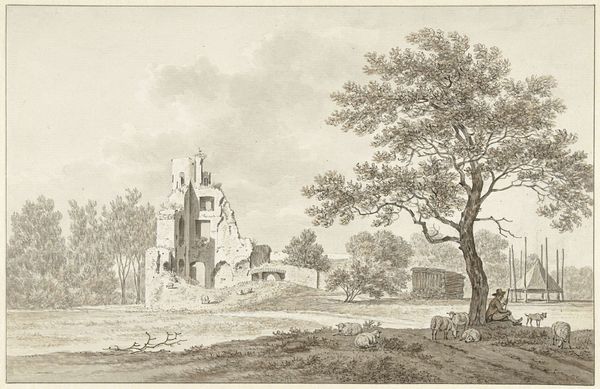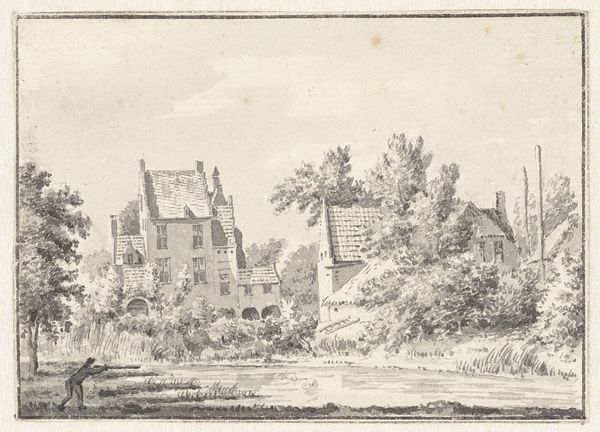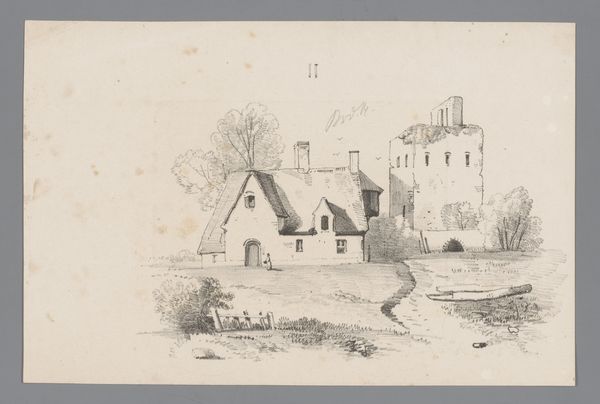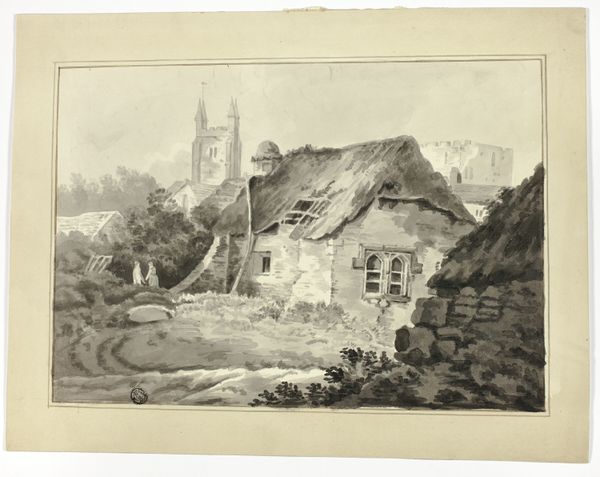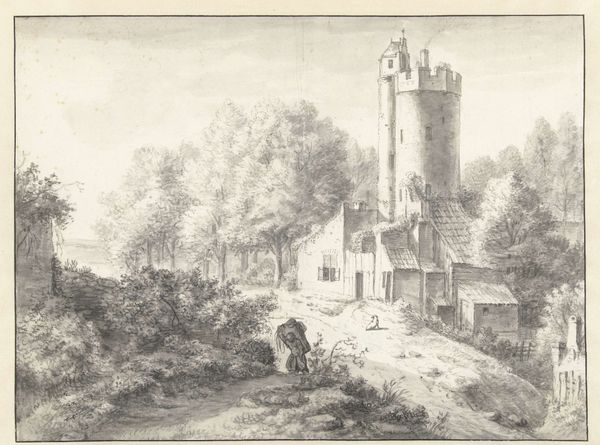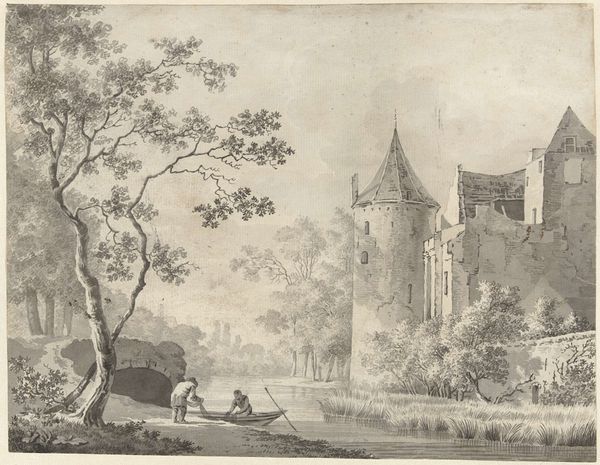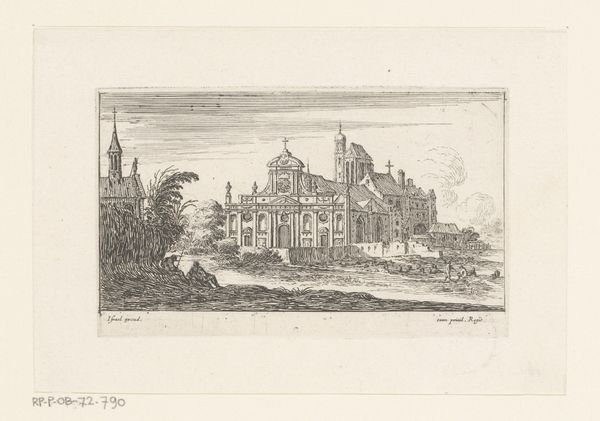
drawing, print, etching
#
drawing
#
medieval
# print
#
etching
#
landscape
#
etching
Dimensions: height 118 mm, width 183 mm
Copyright: Rijks Museum: Open Domain
Editor: So, we're looking at "Kasteel," an etching by Cornelis Steffelaar, made sometime between 1807 and 1861. It's a detailed landscape featuring a castle. It strikes me as quite romantic, almost nostalgic, in its depiction of a seemingly untouched past. How do you interpret this work, considering its historical context? Curator: I see this piece as very much embedded in the romanticized vision of the medieval era prevalent in the 19th century. Steffelaar isn't just depicting a castle; he's participating in a broader cultural trend. Think about the rise of historical novels, the renewed interest in folklore... Landscape prints like these often served a dual purpose, didn't they? Acting as records of architectural heritage, but also feeding into a sense of national identity, nostalgia for a simpler past. Does the work feel idyllic to you? Editor: Yes, definitely. The castle, even with the hint of dilapidation, sits harmoniously within the landscape. Curator: Exactly. And that harmony is key. The picturesque style, popular at the time, aimed to create pleasing scenes that evoked specific feelings. The 'untouched past,' as you put it, becomes a political statement of sorts. By representing these monuments in this way, Steffelaar reinforces certain values and a particular understanding of history. Who was the audience for pieces like these? Editor: Probably middle-class patrons interested in art and history? Curator: Precisely. They were consuming a version of history carefully curated, much like we are now with audio guides, wouldn’t you agree? Editor: I hadn’t considered that. So it's not just about the castle itself, but about the social and political context that gave rise to its idealized image. Curator: Exactly! Art doesn’t exist in a vacuum, right? We need to think about who made it, for whom, and why. It’s fascinating to consider how these images contribute to the construction of collective memory. Editor: This has given me a completely different perspective on landscape prints! It’s much more layered than I initially thought. Curator: Indeed, and remembering to always consider its place in society enriches the analysis process significantly.
Comments
No comments
Be the first to comment and join the conversation on the ultimate creative platform.



